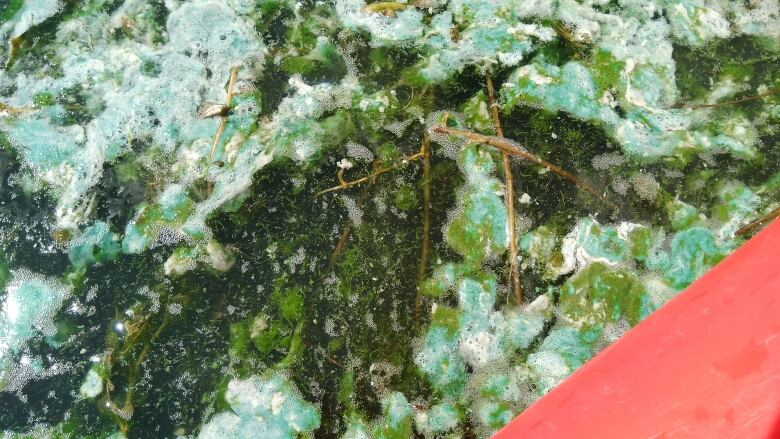Natural and unnatural causes behind late algae blooms in south Sask.
Warmer-than-usual temperatures, high land use contributing to algae growth

Some lakes in south Saskatchewan may seem greener than usual this late in the year, thanks to blue-green algae.
A professor at the University of Regina's biology department saida combination of natural and unnatural causes areto blame.
Peter Leavitt said the main problem right nowis warmer-than-usual water temperatures, which are causing blue-green algae to bloom.
"It's not warm compared to the summer, but the lakes are running five to 10 degrees warmer than they would at this time of year normally," Leavitt told CBC Radio.
"We've had freeze-ups by mid-October in the past."
He said the heavily-used grasslands, spanning an area between Lethbridge, Alta., and the Manitoba and Saskatchewanborder, arealso contributing to greener waters.
Leavitt said while it's easier to say than it is to do,the land needs to be fertilized less than it currently is in order to address the problem.
But with a growing population and a large forecasted population growth in the next 30 to 50 years, he acknowledged that one of the world's so-called breadbaskets is going to need to step up its production.
"In doing so, we need to be careful not to put on too much fertilizerso that it ends up in the surface waters and we end up degrading the environment that we love," Leavitt said.
Check septic systems, explore fertilizer options
He called on homeownerswith properties near lakesto ensure their septic systems are up to or above code so theydon't leak into the nearby water.
Leavitt said he knows most farmers would rather see their fertilizer in their crops than in the water, but he encouraged them to explore other application measures or land tillage as ways to help reduce algae.
He said the problem with the algaebeing produced is it creates cellular toxins, which in turn makes consumption of water a problem.
Leavitt said over the last 15 years, there's been a progressive decline in water quality levels in southern Saskatchewanan area he classified as south of Prince Albert.
It's not in all the lakes, he said, but he said there arevery few "good news stories" among the lakes he's studied.
"They all have excessive abundance of algae and we can actually bore back in time using the mud in the bottom of the lake," he said.
"You can see, when you do that, that the lakes are much greener, say, than when Treaty 4 was signed in the late 1800s."
With files from The Afternoon Edition












_(720p).jpg)


 OFFICIAL HD MUSIC VIDEO.jpg)
.jpg)



























































































